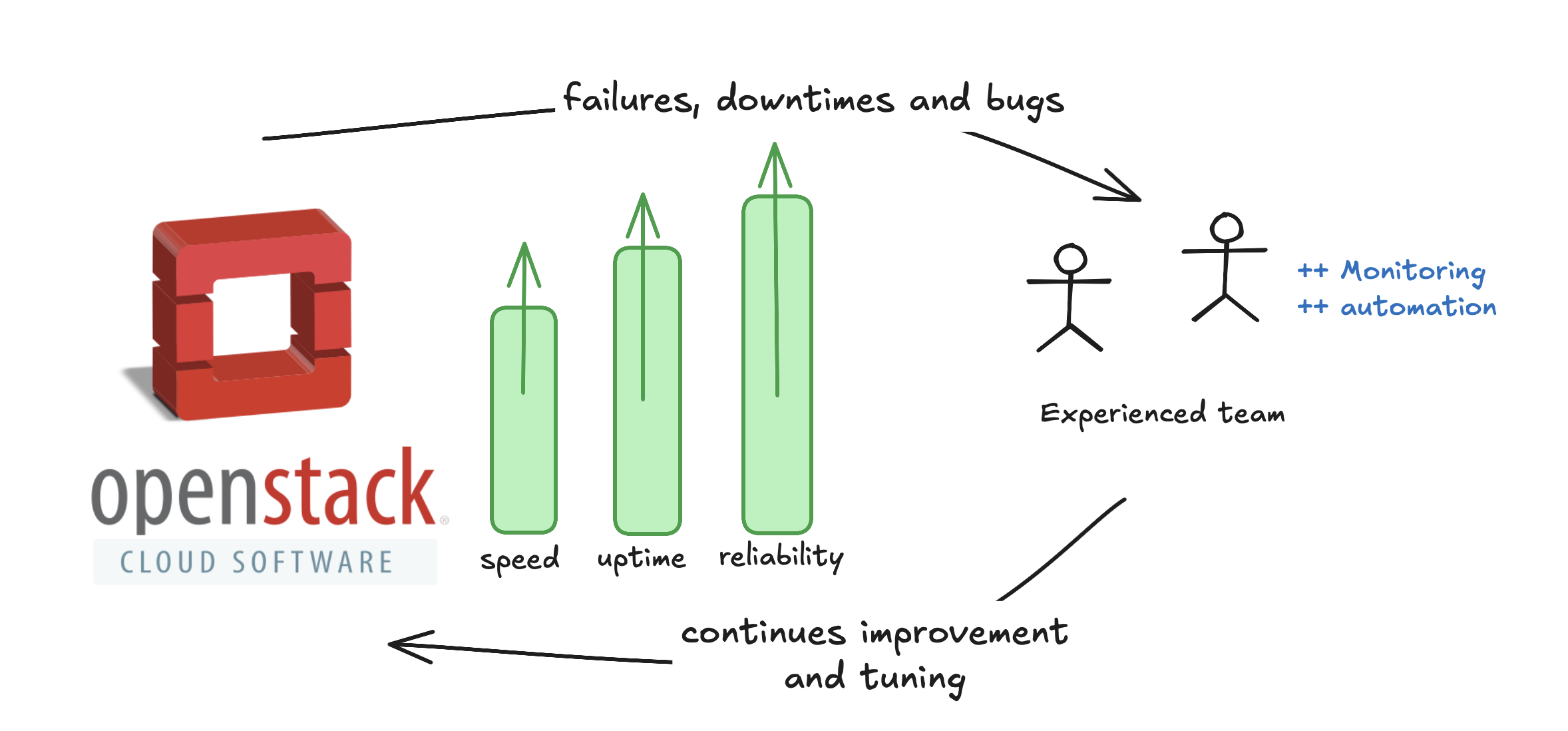Why OpenStack Probably Isn't the Right Solution for You
We will investigate Openstack complexities, and maintenance cost, also we will discuss what Openstack offers in return

OpenStack is a powerful tool for building your own cloud infrastructure. It’s open-source, free to use, and customizable. Many companies pick it to avoid depending on public cloud providers like AWS or Azure. But for most startups and small businesses, it’s probably not the best fit. Here’s why.
What Is OpenStack?
OpenStack is a set of software tools that lets you manage compute, storage, and networking resources. It’s like creating your own private cloud, similar to what big players like Amazon or Google offer, but you run it yourself. People use it for control over their data and infrastructure, and because it can be tailored to specific needs.

Why Was OpenStack Created?
Public clouds are easy to use, but they have drawbacks. Your data sits on someone else’s servers, which can raise privacy or compliance issues. Costs can also climb fast as you grow. OpenStack steps in to fill this gap. It lets you build a private cloud on your own hardware, keeping data in-house and avoiding vendor lock-in.
But running your own cloud isn’t simple. It’s like building a car from scratch instead of buying one. You need skills and effort to keep it going.
What Does OpenStack Require?
To make OpenStack work, you need a team. Not just one person, but a group with different skills: system administrators, network engineers, storage experts, and sometimes developers. For a small business, putting this team together is tough. It’s costly and takes time. You can’t just set it up and forget it—ongoing maintenance is a must. Deploying OpenStack often needs a team of experts; it’s not a solo job or something for a small, inexperienced crew.

Pros and Cons of OpenStack
Here’s the good and the bad.
Pros:
Control: You own your setup and decide how it runs.
Customization: You can tweak it to fit your needs.
Cost: Over time, it might save money compared to public clouds.
Community: A big group of users and developers offers support.
Cons:
Complexity: It’s hard to set up and manage.
Resources: You need a dedicated team.
Upgrades: Updates can be messy and cause downtime.
Documentation: Info can be spotty or hard to find.
OpenStack brings scalability and automation, but the complex setup and need for skilled people are big hurdles.
Customization and Open-Source Benefits
OpenStack being open-source is a mixed bag. You can change it however you want, and there’s a community improving it. But you need the know-how to make those changes. Without that, the flexibility doesn’t help much.
Competitors and Scale
Public cloud options include AWS, Azure, and Google Cloud. For open-source rivals, there’s Apache CloudStack and OpenNebula—OpenStack is the most popular, though. Some compare it to VMware’s vSphere, but they’re different tools. vSphere suits smaller, in-house setups, while OpenStack handles large-scale, multi-tenant clouds Reddit post. It can scale big, but that takes serious resources and expertise.
Closing Thoughts
For most startups and small businesses, OpenStack is too much. It’s complex and demands a lot of resources. A public cloud or simpler virtualization might be easier. But if you’ve got the budget, a need for a private cloud, and a skilled team, OpenStack can shine. It offers control and customization that’s hard to beat. Just know what you’re signing up for.
